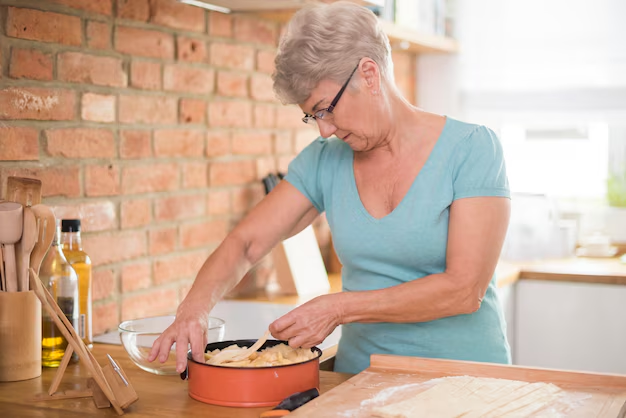Can You Safely Transfer Pyrex from Refrigerator to Oven? Here's What You Need to Know
Imagine you've prepared a delicious casserole and stored it in the refrigerator in a Pyrex dish. You want to pop it directly into the oven for dinner; however, is this safe? Transitioning Pyrex from the cold environment of a refrigerator directly to the heat of an oven is a common kitchen practice, yet it raises important questions about safety and best practices. Here, we’ll explore how to safely handle Pyrex cookware to avoid accidents while maximizing your cooking efficiency.
Understanding Pyrex: Composition and Benefits
Pyrex is a brand synonymous with durable kitchenware. Originally made from borosilicate glass, modern Pyrex is often composed of tempered soda-lime glass. This change improves resistance to mechanical impact while maintaining good temperature resilience. Pyrex is popular due to its:
- Strength and durability
- Thermal resistance
- Dishwasher safety
- Non-reactive surface, which doesn’t leach chemicals
- Clear transparency, allowing easy monitoring of cooking progress
These qualities make Pyrex dishes a staple in many kitchens, but proper use is essential to avoid breakage.
Transitioning from Refrigerator to Oven: Best Practices
Temperature Shock: The Hidden Danger
Temperature shock occurs when a material is exposed to a drastic change in temperature, causing it to crack or shatter. Glass is particularly vulnerable, making caution necessary when using Pyrex.
Tips to Prevent Temperature Shock
- Avoid Direct Heat: Never place Pyrex directly on a stovetop or under a broiler. Opt for using the oven only.
- Allow Gradual Temperature Increase: Let the Pyrex sit at room temperature for a few minutes before placing it in a preheated oven.
- Use for Appropriate Cooking: Stick to baking and reheating tasks rather than broiling or quick cooking methods.
- Ensure Uniform Heating: Arrange items in the oven to promote even heating around the Pyrex dish.
Safe Oven Practices
- Preheat the Oven: Always preheat the oven to ensure consistent temperature exposure.
- Monitor Cooking: Keep an eye on your dish to prevent extreme temperature variations.
- Use Lower Racks: Placing the Pyrex on the middle or lower rack minimizes extreme heat exposure from oven elements.
Handling and Care Instructions
Caring for Pyrex extends beyond active cooking:
- Avoid Sudden Changes: Don’t take Pyrex directly from the fridge to a hot oven or vice versa. Allow it to sit or move gradually between temperatures.
- Cooling After Baking: After baking, let the Pyrex cool on a dry surface, such as a wooden cutting board, rather than a wet or cold countertop.
- Clean Responsibly: Avoid immersing hot Pyrex in water. Allow it to cool before cleaning.
- Inspect for Damage: Regularly check for chips or cracks that may compromise strength.
The Science Behind Pyrex’s Durability
Borosilicate vs. Soda-Lime Glass
Originally, Pyrex was crafted from borosilicate glass, known for its ability to withstand thermal shock. Today's Pyrex is mainly soda-lime glass, tempered for strength and impact resistance. While it is more durable against mechanical impacts, it trades off some thermal shock resistance, making proper handling methods critical.
Pyrex’s Thermal Properties
Pyrex is engineered to expand and contract evenly. However, sudden exposure to heat or cold can disrupt this balance, leading to breakage. Therefore, understanding these limitations is key to safe use.
Alternatives and Complementary Cookware
While Pyrex is versatile, other materials can complement its use in the kitchen:
- Ceramic: Excellent for slow, even cooking, and retains heat effectively.
- Cast Iron: Perfect for high-heat cooking but requires careful seasoning and handling.
- Metal Bakeware: Heats quickly, ideal for recipes needing rapid, even heat.
Each material has unique properties and use cases, allowing for diverse and effective cooking methods.
Troubleshooting Common Issues
Accidents and issues may arise despite taking precautions. Here’s how to address potential problems:
- Cracks and Chips: Discontinue use if you notice these, as they compromise structural integrity.
- Stains and Odors: Clean with vinegar and baking soda paste to remove discoloration and odors.
- Stuck Food: Soak in warm, soapy water to loosen residue before scrubbing gently with a non-abrasive pad.
Key Takeaways and Practical Tips
🔑 Safe Transition: Let dishes sit at room temperature briefly before baking. 🔍 Monitor Temperature: Use the middle or lower oven racks and avoid stove-top use. 🧼 Cleaning Practices: Allow cooling before cleaning; avoid immediate temperature changes. 💡 Inspect Regularly: Check for damage to avoid sudden failures.
Handy Summary of Pyrex Use from Refrigerator to Oven
| Task | Recommended Practice |
|---|---|
| Initial Use | Let Pyrex sit at room temperature before heating 🔄 |
| Cooking Method | Bake or reheat at moderate temperatures 🍲 |
| Oven Rack Placement | Use middle or lower racks for even heating 🔥 |
| Post-Cooking Care | Cool slowly on dry surfaces 🌡️ |
| Cleaning | Use safe methods after cooling 🧽 |
| Damage Check | Regularly inspect for chips or cracks 🔍 |
Using Pyrex safely ensures you enjoy its durability and versatility without the risks associated with careless handling. By understanding your Pyrex’s limits and following these best practices, you can ensure that your meals remain both delicious and stress-free.
